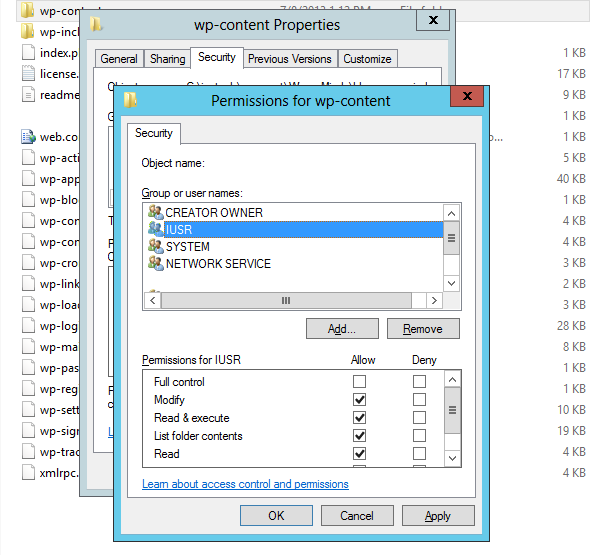Wordpress The Uploaded File Could Not Be Moved To Wp-content/uploads/2014/03
Upload file could not be moved to wp-content/uploads. You upload a file The uploaded file could not be moved to. Is not affiliated with the WordPress.

This article explains and resolves the issue very well: The basic premise is that the identity of the process running your httpd / apache / web server thread must have write access to your upload directory. To resolve the issue:. Check which account your webserver is running under Update: On Unix use. Ps aux egrep '(apache httpd)'. This will show a list of processes for the web server along with the identity of the process under which its running e.g.' Nobody' nobody 8718 0.1 0.4 130? Sl 17:11 0:06 /usr/local/apache/bin/httpd -k start -DSSL.
Update the permission of the upload directory to allow that account to write to it. Update: On Unix, you can use. Chown -R nobody //wp-content/upload/ You can also amend permissions for this account (at the rquired location) to ensure it has write permissions using chmod or filezilla and cascade the changes to the directories as necessary. Check out the linked article for a detailed breakdown. Hope that helps!:).
I have searched and found that the problem is from server provider. Typically, all files should be owned by your user (ftp) account on your web server, and should be writable by that account.
Give More Feedback
On shared hosts, files should never be owned by the webserver process itself (sometimes this is www, or apache, or nobody user). Any file that needs write access from WordPress should be owned or group-owned by the user account used by the WordPress (which may be different than the server account). For example, you may have a user account that lets you FTP files back and forth to your server, but your server itself may run using a separate user, in a separate usergroup, such as dhapache or nobody. If WordPress is running as the FTP account, that account needs to have write access, i.e., be the owner of the files, or belong to a group that has write access. In the latter case, that would mean permissions are set more permissively than default (for example, 775 rather than 755 for folders, and 664 instead of 644).